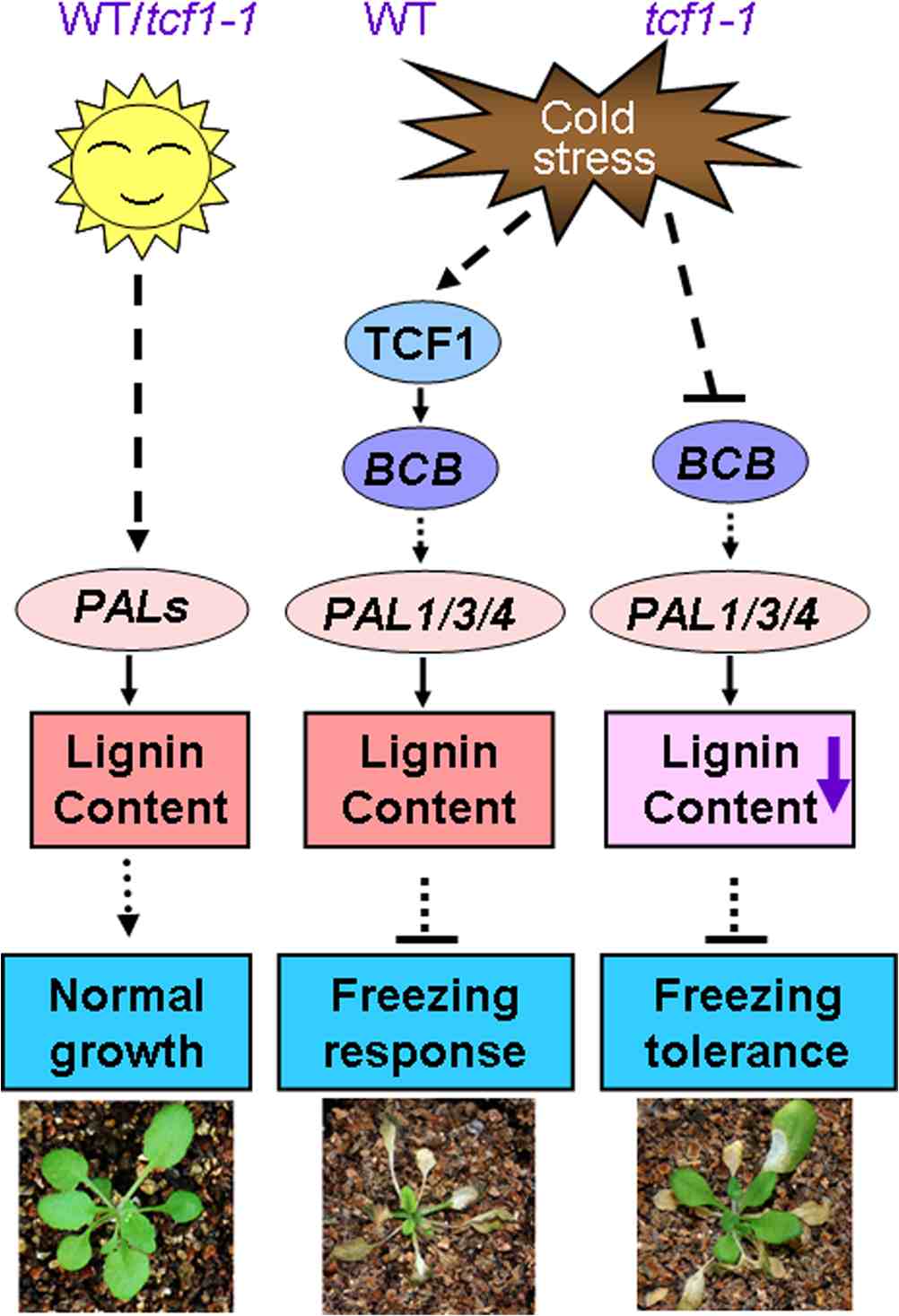This weeks Arabidopsis Research Roundup includes papers, from Glasgow and Oxford, that look at a plants response to different abiotic stresses and uncover control mechanisms that might have potential as targets for future genetic modification or gene-editing strategies. In addition there is a study from Leeds that uncovers a novel molecular mechanism in the DNA repair pathway and finally an international group of researchers with a UK lead at Kings College use infrared microspectroscopy to investigate internal cellular structures
Ji H, Wang Y, Cloix C, Li K, Jenkins GI, Wang S, Shang Z, Shi Y, Yang S, Li X (2015) The Arabidopsis RCC1 Family Protein TCF1 Regulates Freezing Tolerance and Cold Acclimation through Modulating Lignin Biosynthesis PLoS Genetics 11(9):e1005471 http://dx.doi.org/10.1371/journal.pgen.1005471
Gareth Jenkins (Glasgow) is the UK lead representative on this Chinese-led study into the role of the ‘Tolerant to Chilling and Freezing 1’ (TCF1) protein. This protein is induced by the cold to move to the nucleus where it interacts with histones H3 and H4, specifically at the BLUE-COPPER-BINDING PROTEIN (BCB) locus, which is involved in lignin biosynthesis. Loss of TCF1 causes changes in the positive histone mark H3K4me2 as well as the negative mark H3K27me3, resulting in reduced lignin content and enhanced freezing tolerance. This growth phenotype was recapitulated in other mutants that have reduced level of lignin. Therefore the authors suggest that TCF controls a CBF-independent signaling pathway that reacts to cold conditions by causing cell wall remodeling. In tcf mutants this pathway does not function correctly and the plants are more tolerant to freezing conditions. This marks either TCF or the genes downstream of it as potential targets for genetic modification to develop cold-resistant plants. The associated figure is taken from PLoS Genetics.
Ling Q1, Jarvis P (2015) Regulation of Chloroplast Protein Import by the Ubiquitin E3 Ligase SP1 Is Important for Stress Tolerance in Plants Current Biology. http://dx.doi.org/10.1016/j.cub.2015.08.015
Paul Jarvis (Oxford) is an expert on the mechanisms that control protein import into the chloroplast and this study looks at the interaction of the TOC translocon apparatus with ubiquitin-proteasome system. The chloroplast envelope-localised E3 ubiquitin-ligase SUPPRESSOR OF PPI1 LOCUS1 (SP1) was previously known to regulate levels of TOC and so control protein import and impact the composition of the chloroplast proteome. This study is expanded to show that SP1 plays an important role in the response to abiotic stress with sp1 mutants being hypersensitive to salt, osmotic, and oxidative stresses whereas the opposite is true in SP1 OX plants. They uncover the molecular mechanism to this response by showing SP1 facilitates the depletion of the TOC apparatus, subsequently reducing the import of photosynthetic apparatus components which attenuates photosynthesis and reduced the production of potentially damaging reactive compounds in the chloroplast. The authors show that chloroplast protein import is responsive to environmental cues and this modulation of this process might open up new avenues of research for improving stress tolerance in crops.
Waterworth WM, Drury GE, Blundell-Hunter G, West CE (2015) Arabidopsis TAF1 is an MRE11-interacting protein required for resistance to genotoxic stress and viability of the male gametophyte The Plant Journal http://dx.doi.org/10.1111/tpj.13020
Christopher West (Leeds) is the research lead on this investigation into the essential function of double strand breaks (DSBs) during recombination. These DSBs are repaired by the endonuclease MRE11 and this work demonstrates an interaction with the histone acetyltransferase TAF1, which is an essential gene in Arabidopsis. The remainder of the paper uses genetic and phenotypic analysis to show that TAF1 is important for gamete viability in an effect that is dosage dependent. Taf mutants are more sensitive to genotoxic stresses thus showing that the TAF1 protein has a specific role in the DNA damage response. This provides new insights into the molecular mechanisms of the DNA damage response in plants.
Warren FJ , Perston BB, Galindez-Najera SP, Edwards CH, Powell PO, Mandalari G, Campbell GM, Butterworth PJ, Ellis PR (2015) Infrared microspectroscopic imaging of plant tissues: spectral visualisation of wheat kernel and Arabidopsis leaf microstructure. Plant Journal http://dx.doi.org/10.1111/tpj.13031
This international study was led by <a href="http://www.kcl.ac.uk/lsm/research/divisions/dns/about/people/profiles/peterellis recherche cialis.aspx” onclick=”_gaq.push([‘_trackEvent’, ‘outbound-article’, ‘http://www.kcl.ac.uk/lsm/research/divisions/dns/about/people/profiles/peterellis.aspx’, ‘Peter Ellis’]);” target=”_blank”>Peter Ellis (Kings College) and includes a variety of labs not usually connected with Arabidopsis work but rather are interested in the interaction between the plant cell wall and the human gut. They used Infrared microspectroscopy as a tool to investigate the microstructure of wheat kernels and Arabidopsis leaves. This technique was able to discern structures such as starch granules and protein bodies within cells. Stimulated digestion on the wheat tissues showed that digestion promotes a loss of starch as might be predicted. This article might be of interest to plant scientists who are interested in use of infrared spectroscopy.

